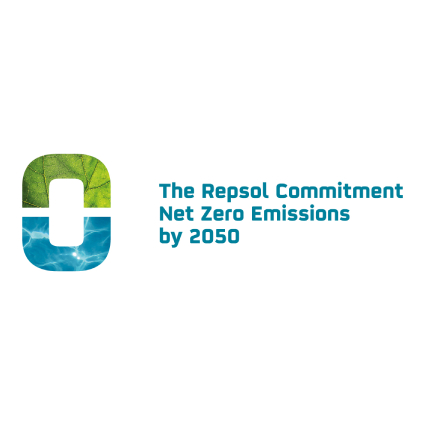
What is a just transition?
What is a just transition?
A fair and inclusive economy for everyone
A fair and inclusive economy for everyone
Actions to tackle climate change present specific challenges linked with social justice and the future of employment, especially in regions and communities with a strong dependence on fossil fuels and limited opportunities for diversifying their economies. The just energy transition offers the most equal and inclusive solutions possible for progress towards a decarbonized economy for everyone.
What is a just transition?
What is a just transition?
The fair (or just) transition is the framework for action to tackle climate change, proposed to maximize the benefits for activity and employment, and to minimize the negative effects of the ecological transition and decarbonization.
The term was introduced by the unions in the 1990s when, in exchange for undertaking to defend climate action, they asked the institutions to include job guarantees for the workers and areas affected in their environmental policies. The definition of a just transition given by the International Labor Organization (ILO) is “greening the economy in a way that is as fair and inclusive as possible to everyone concerned, creating decent work opportunities and leaving no one behind.”
In 2015, the Paris Agreement finally recognized that implementing policies to reverse climate change should take into account “the imperatives of a just transition of the workforce and the creation of decent work.”
Basic principles of the just transition
Basic principles of the just transition
A just transition strategy is achieved when the achievement of the following principles is sought at the same time:
- Actively promote decarbonization: invest in renewable energies and sustainable solutions that reduce greenhouse gas emissions, especially the sectors that are the hardest to decarbonize.
- Curb investment in activities with high-carbon emissions: Diversify the economy and promote the development of more environmentally-friendly industries.
- Protect the regions affected: actively favor areas that now depend on carbon-intensive industries so that they can deal with the energy transition and train their employees in new skills.
- Confront economic and social inequality: to do so, it is necessary to identify the current social divides (such as those based on gender, age, ethnic origins, or disability), identify the impact of the transition on the different areas, and design aid that will not only go to those who work directly in carbon-intensive industries, but also to the most vulnerable social groups.
- Help the workers harmed by closures or a drop in production: offer assistance and training to those affected by the transition to a low carbon-emissions economy, and ensure that these programs also reach their families and the community in general.
- Correct environmental damage: reinforce regulatory requirements and financial guarantees so that the closure of mines and big industries takes place alongside the implementation of the necessary environmental protection and remediation measures.
- Ensure a planning process that is inclusive and transparent: create a scenario in which all social and political stakeholders play an active role in defining regional plans and identifying the opportunities and challenges that it is necessary to tackle.
Government initiatives for a just transition
A just transition strategy is achieved when the achievement of the following principles is sought at the same time:
The start of multilateral action to fight climate change may be traced back to the approval of the Kyoto protocol in 1997, which finally came into force in 2005 and led to the creation of International emissions trading, among other measures. In 2015, the Paris Agreement included the notion of a “just transition”, something much cherished by the International Labor Organization (ILO). Its director, Guy Ryder, emphasized that this was “the first time that notice has been taken of the need to respect the rights of everyone in climate transition processes.”
Subsequently, the New York Climate Conference launched the international Climate Action for Jobs initiative in 2019, mandating the ILO to develop that proposal with the aim of stimulating countries to adopt national just transition plans as part of their climate policies.
For its part, the government of Spain and the ILO signed a strategic association agreement in July 2018 to implement the ILO Guidelines for a Just Transition as a guiding framework and practical tool for action. The result of this work was the National Just Transition Strategy.
In addition to this proposal, this country has implemented other regulations that commit to a transition to a responsible and inclusive decarbonized economy:
- Climate Change and Energy Transition Law
- National Integrated Energy and Climate Plan
- 2025 Digital Spain agenda
- Recovery, Transformation, and Resilience Plan.
Who does the just transition benefit?
Who does the just transition benefit?
The just transition is an attempt to work towards a decarbonized economy by creating the right conditions so that no industry, region, or social group is harmed by its progress. For example, a company that until then had been working with fossil fuels and decides to make the most of government incentives to change to solar panels, instead of dismissing its employees, will have to develop training plans to relocate them to better, more ecological jobs.
The just transition today
The just transition today
As we have seen, well-managed, just transition strategies can be an important engine for creating value, improving job quality and social justice, and eradicating poverty. In fact, introducing more efficient practices in the area of energy, reducing pollution, and sustainably managing natural resources fosters innovation, strengthens resilience, and creates value, which attracts new investments and activates employment.
Sustainable development
Sustainable development
The needs of the current generation without compromising the abilities of future generations.

What is the energy transition?
What is the energy transition?
All about the energy transition

